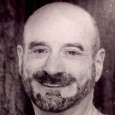In November, 1996, I attended an AIDS Conference in Chautauqua, New York. I had participated in many such conferences during the past decade. But this one was different. A new classification of drugs called protease inhibitors provided the ammunition to create a combination therapy “cocktail” that had dramatically changed the course of the AIDS epidemic, seemingly overnight. For the first time since the start of the epidemic, there was real, palpable hope.
At the end of the three-day conference, a large van arrived to take eight of us to the Buffalo airport. It was bitterly cold but the evening air smelled clean and country-fresh. The clocks had been turned back and it was pitch black except for the mass of stars above. It had been a long three days for the participants. I climbed in the back row of seats with Yvonne, a small, delicately fragile black woman of perhaps 35, though she could have passed for 70. Her cheeks were hollow and the teeth that remained in her mouth were yellowed.
We talked in hushed tones. There was an eerie stillness around us. The hum of the engine drowned out our conversation to the other passengers and, as far as I could tell, those in the seat directly in front of us seemed to have nodded off. The trip to the airport was a good hour’s drive. All around us was blackness, save for the headlights of our vehicle and the few oncoming cars on the near-empty country highway. It seemed as if we were floating in space.
Yvonne told me of her husband who had recently died from the disease. She was bringing up a son by herself, and both she and her son had the virus. She was living on Social Security Disability benefits and was unsure how she was going to pay her bills.
She told me that she was “at a loss.” Then she turned away, her head facing the window, and asked, to no one, really:
“Where did I go?”
There was a moment of silence, her reflection looking back at her in the darkness. And then she turned back to me and said, very softly, “I just want my life back.”
I just want my life back.
We were from different worlds, Yvonne and I. She was a financially destitute, heterosexual woman of color from rural Pennsylvania. I was a privileged, white gay man living in NYC. We had little in common except that we were both survivors in this strange new land and we had lost loved ones at too young an age. What else but this epidemic would have brought the two of us together in that place, in that moment in time?
With those few words, in a van hurtling down a lonely highway in the black of night, Yvonne expressed that which I had been feeling but had never verbalized in just that way.
I wanted my life back.
I wanted to close my eyes and click my heels and be back in that time, a time before AIDS, a time before loss, before fatigue and daily pills and doctors’ offices and physical rejection and more loss. I wanted to return to joy, to hope, to the innocence of romantic love, to possibility. I wanted to be touched. I wanted my circle of friends to magically re-appear, like in the movie Longtime Companion, where all of the dead gay men come back to dance on the beach at Fire Island. I wanted this alien ripped from my body.
Barring the possibility of waving a wand and going back in time, I think what Yvonne meant, and what we both hoped for, was that perhaps this new treatment would be the “magic bullet” that would restore our immune systems and lessen our side effects, and that we could someday return to whatever passes for a normal life.
For over a decade, my primary focus had been to stay alive -- one day, one breath, at a time. That had been my job. Everything else -- career, love, finances, family, friends -- became secondary. I had to learn how to live with the stigma and the shame and the rejection and the immense loss. I lived in the country of AIDS, on another planet, in another century, speaking a foreign language, in what Virginia Woolf described as the “undiscovered country” of illness.
There was a Before. And there was an After. The cocktail changed everything.
At the end of 1995, I had been living with the virus we now know as HIV for 12 years. Ninety-three of my friends, relatives and colleagues had died of AIDS-related diseases between the years 1982 and 1995. Since the drug treatment cocktail was introduced in 1996, I have known of only three.
I was one of the lucky ones. I had hung on and somehow made it to the other side. Through luck, genetics, timing, determination, healthy denial, or, more likely, a combination of them all, I survived.
New challenges would await me as I would learn to adjust to life as a longterm survivor. But in that moment, in that van, it was as if Yvonne and I were alone together in a space shuttle about to blast off into the unknown.
As we neared the airport, our whispered conversation began to subside. We remained still, looking ahead, both of us contemplating the ghosts of our past and the possibilities of a future we once never thought possible. And we rode the rest of the way in shared silence, until we reached our destination.








3 Comments
3 Comments